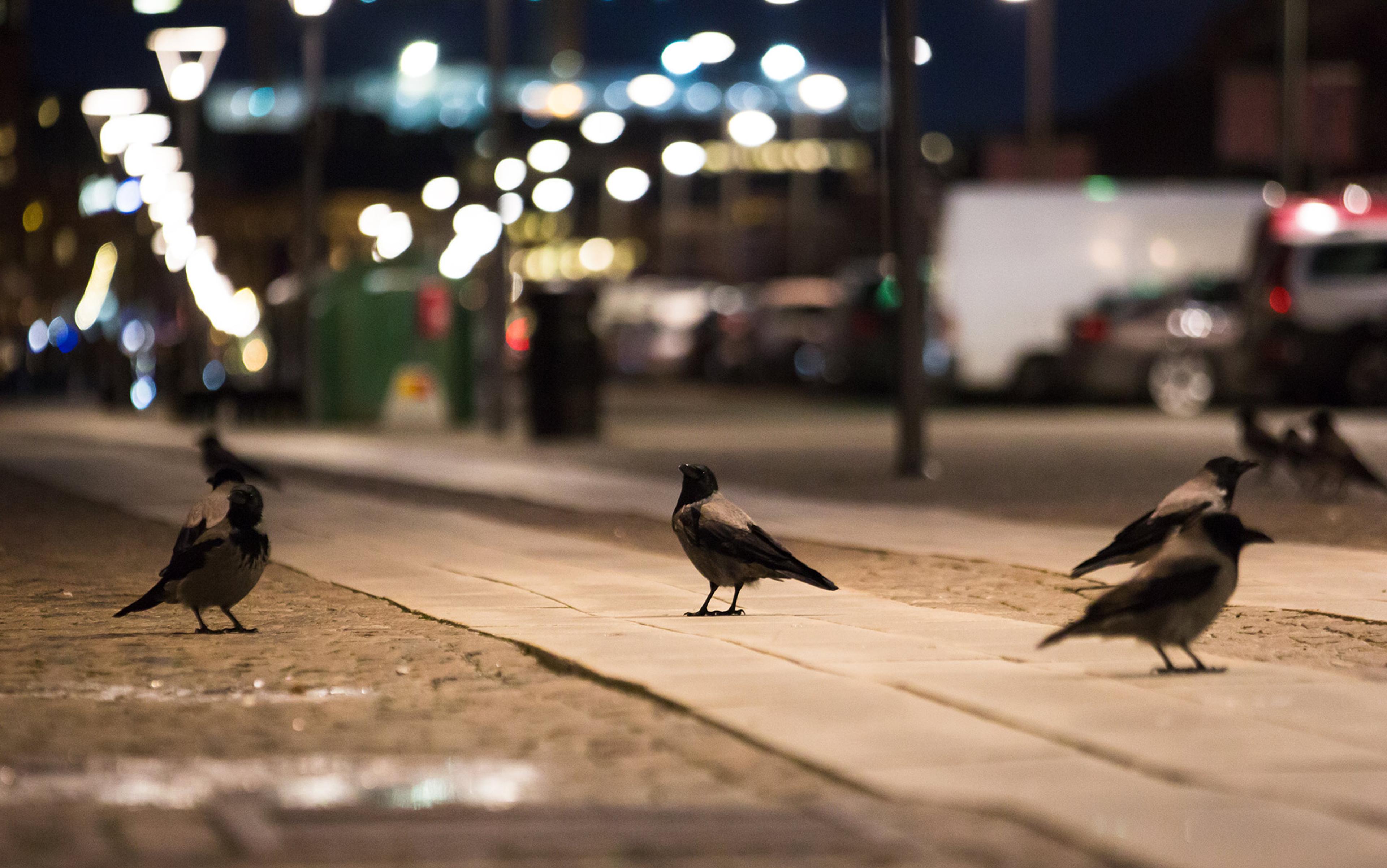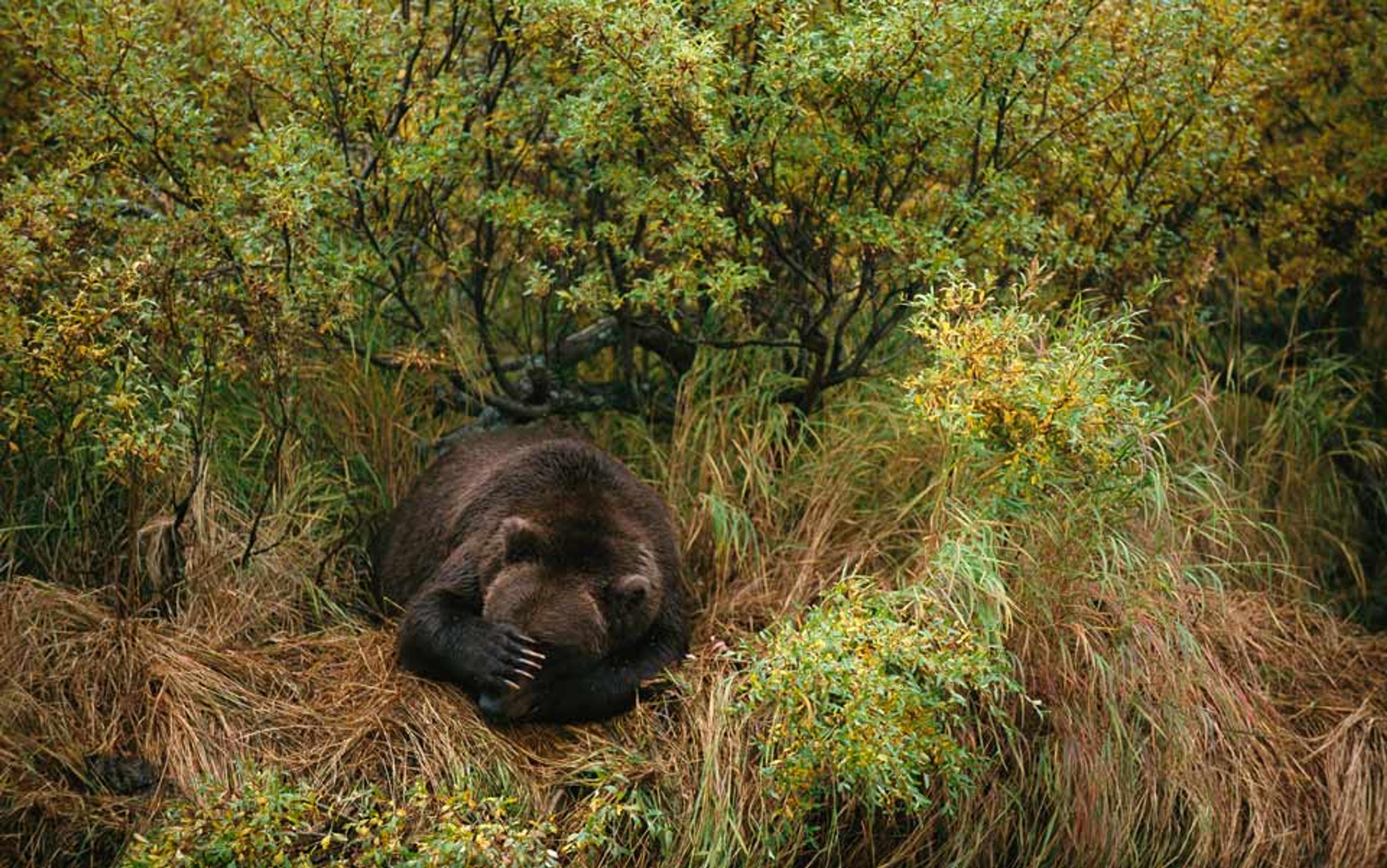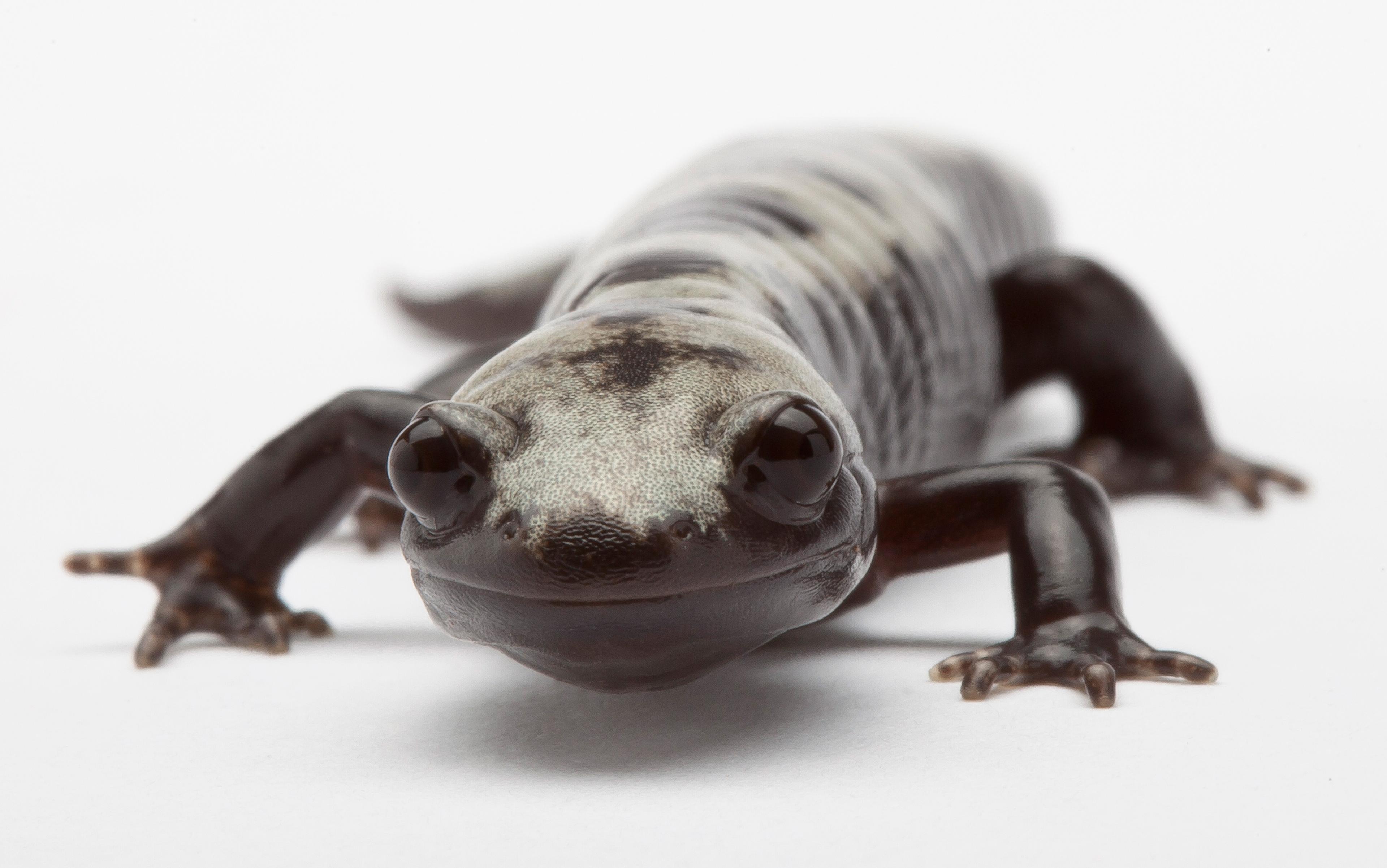My backyard is a peaceful respite from the nearby city of Seattle. Eighty-year-old firs and cedars provide an emerald backdrop for the wildlife with which I share a single hectare of forest. Western tanagers sing from the canopy. Wrens, sparrows, towhees and juncos breed in the lower shrubs, while native red squirrels and Townsend’s chipmunks busily gather nuts and seeds for their winter store. A resident Anna’s hummingbird works the annual succession of blooms and vigorously defends the feeder my family stocks with sugary syrup. At night, a concert performed by owls, tree frogs or coyotes eases us into slumber.
The diversity of life in my yard and those of my neighbours seems to defy the fact that the loss of natural space to urban sprawl endangers plants and animals across the globe. Intrigued by how our presence simultaneously stimulates and threatens life, especially birdlife, I set out to discover what happens when we clear forests or pave fields to expand our living space. Together with my graduate students at the University of Washington and an army of technicians, I rose early each summer morning, beginning in 1998, and stood among the forests, suburbs and work places of Seattle and its neighbouring cities. For more than a decade, we used a standard research approach to count each bird heard or seen near us. And we caught and banded thousands of birds to track their survival and nesting success.
The first years of counting reaffirmed what I witnessed in my yard. The variety of birds in suburbs and exurbs was unsurpassed. Even the nearby forest reserves we used as ‘control sites’ – places where we expected nature to thrive – were less diverse than lightly developed areas. City centres were home to only a few species, as we anticipated, but even here birdlife was inspiring – peregrine falcons plied the skies, while crows and gulls ruled the streets. In the small fragments of forest left in and around subdivisions, some of the birds we counted were disappearing; however, others lived long lives in healthy and sustainable populations.
True, forest specialists such as Pacific wrens and Wilson’s warblers could only sustain small populations in subdivisions but, as a balance to their loss, we documented the colonisation of Bewick’s wrens, house finches and many more species that thrive in the clearings and edges between forest and open space which occur in developments. Even where new buildings, lawns and pets invaded the birds’ world, many individual birds prospered. Most of the small birds we found – some weighing less than 10g – raised annual broods of young, sometimes retaining their tenure on a specific territory for four to six years. Transformation of the land by new human neighbours shuffled the bird community, but clearly did not extinguish it.
Reading and travelling widely reinforced my discovery that, almost everywhere, the greatest diversity of birds is not supported by primeval forests but by the jumbled collection of houses, allotments and gardens, derelict and vacant land, golf courses and other recreational sites, and by the cemeteries, schoolyards, highway and railway verges, business parks and shopping centres, situated amid the greenways that comprise suburbia. The places where we live, work and play were transformed from the ‘geography of nowhere’ to the geography of life – subirdia.
I am not claiming that suburban sprawl is the answer to our conservation prayers: many species of sensitive and rare birds could never survive in our ’burbs. Even fewer animals that crawl or walk, such as mammals, reptiles and amphibians, manage to live long among us. And, where terrestrial biological diversity is greatest – in the magnificent tropical rainforests – biodiversity is steadily lost with progressive development. But development can enrich local areas by providing what many tolerant species require. Although ensuring global diversity still requires that we leave undisturbed space elsewhere for sensitive species, even then, the political will to create such reserves depends on our experiences with local diversity.
Birds respond to suburban sprawl in complex ways. The most sensitive species, those closely tied to natural conditions and whose populations decline with development, are known as ‘avoiders’. In the US, yellow-billed cuckoos and black-throated grey warblers are avoiders; in Europe, there are wrynecks and nightingales. Two other groups of birds – those that adapt to and those that exploit humanity’s riches – increase with development. ‘Adapters’ – tits, chickadees, magpies, blackbirds – frequently reside in our yards and work places. ‘Exploiters’, too, are rarely found far from people, often amassing substantial urban populations. Some exploiters, such as barn swallows and barn owls, are native species, but others are not. Five exploiters – rock pigeon, mallard, Canada goose, house sparrow and European starling – are found in developed lands around the world, despite being native to either North America or Europe.
In most temperate places, whether originally forest or grassland, adapters and exploiters outnumber avoiders, so the number of unique species peaks in suburbs and then drops in both more developed and less developed nearby places. What’s more, suburban diversity really soars where 30-60 per cent of the area includes some natural vegetation (typically scattered among parks, golf courses, shorelines, rugged slopes and other undeveloped parcels). These natural areas house some avoiders and many adapters, while adapters and exploiters are found in nearby grassy areas and water features, such as storm‑water retention ponds.
In London, where the comings and goings of avoiders, adapters and exploiters have been tallied for more than a century, bird diversity has steadily climbed as the city has diversified its land base and improved its health with greener parks, bluer water and cleaner air. In 1900, 25 kinds of bird were known to inhabit the 40 square kilometres of open land that lay within the 25-mile radius managed by the City of London Corporation. In 1975, there were 40 species in this area, including 20 of those present in 1900. In 2012, 60 species called it home. The heterogeneous mix of lands in and around cities begets diversity, as different, albeit tolerant, birds capitalise on the variety of foods and nesting locations that are found close together. Reptiles and amphibians have fared less well – natterjack toads, for example, became extinct in London the 1960s, and poisonous adders and common toads continue to decline.
Many birds thrive in our cities and suburbs because they exploit our waste or actively seek our benevolence. Pigeons, mallard ducks and house sparrows seem ever on the lookout for a dropped crust of bread or a person eager to feed them. Our penchant for bird‑feeding helps mitigate the loss of natural foods from plants in paved portions of the city. In Europe, North America and Australia, between one in three and one in five families feed birds. In the US, somewhere between 500,000 and 1.2 million tons of birdseed enters the food chain every year. The result is a vibrant community of nuthatches, chickadees (tits), woodpeckers, juncos and sparrows in subirdia. Those who also provide houses for birds further exemplify our symbiotic role in the ecosystem. We discovered that between 20 and 30 per cent of people in Seattle and Berlin do so.
Each morning the birds queue up with shoppers just before the doors open so they can fly inside and feed among the cafés and shelves
In this way, we humans allow one group of birds with special needs to thrive in our midst: a guild of birds known as ‘secondary cavity nesters’. These birds usually breed and sleep in holes drilled into decaying trees by woodpeckers, but in cities they nest in the nooks and crannies in our buildings, street lamps and overpasses. Facilitating secondary cavity nesters such as wrens, tits and swallows enriches subirdia’s ecological web and, critically, tightly entwines people within it.
Birds that survive in cities and suburbs do more than simply take handouts; some evolve new actions and physiques that allow them to better exploit humans. For example, the Brewer’s blackbirds that nest around my house have evolved a new behavioural strategy syncopated to our own actions. These scrappy parking-lot specialists gather each morning just outside a nearby Costco store and queue up with shoppers before the doors open so they can fly inside and feed among the cafés and shelves. I suspect this is ordinary natural selection at work shaping the diet and behaviour of blackbirds through enhanced survival and reproduction.
Another process of evolution, recognised by Charles Darwin as ‘sexual selection’, is also at work in subirdia. The dark-eyed junco, often called a ‘snowbird’, is a small, ground-dwelling seed-eater, characteristic of subdivisions in the US. Typically, male juncos have two or three white outer tail feathers that contrast with the darker, charcoal grey inner ones. These white feathers are reliable indicators of a male’s aggressiveness and ability to defend his patch of earth from his rivals: in battle, those with the most white win. However, aggressive males are also less attentive of their nestlings, something that appears to be noticed by urban female juncos. In the city, where heat and food are readily available, the breeding season is long, and a female junco can produce many broods of nestlings – especially if her male is faithful and cares for one brood while she hatches the next. The result has been a gradual muting of the male city junco’s tail because birds that are less willing to fight and more skilled at tending young are favoured by females.
While the strands we weave in our ecological web push some species into danger of extinction, they clearly also help create new forms of life. The blackcap is a small European bird that mostly munches insects during the summer, but switches to fruits and seeds during the winter. The typical blackcap migrates from its continental European breeding grounds southwest to the Mediterranean olive groves of Spain and North Africa for the winter; but since migration routes are notoriously variable in birds, some blackcaps migrate northwest to winter in Britain.
With moderate city temperatures and abundant birdseed, the number of northwest migrants is on the rise. This once less-travelled route is shorter – which enables an earlier return to breeding by British blackcaps than by southern migrants. And because mates are selected shortly after arrival on the breeding grounds, British birds mate with one another, and pass to their offspring whatever genetic code wings them northwest. Southwest migrants also pair among themselves, endowing their offspring with a genetic tendency to fly southwest. This tendency to mate with similar individuals – what biologists call ‘assortative mating’ – is a good thing, because hybrid offspring would migrate west and perish in the Bay of Biscay.
British blackcaps overwintering on birdseed and suet rather than fruit have further evolved short, round wings and narrower beaks ideally suited to take human provisions. Distinctive and heritable habits and appearances that fit an animal to its environment are vital ingredients to the speciation process. In time, European birdwatchers or ‘twitchers’ will likely add a new species – the urban blackcap – to their bird lists; one literally of their own making.
The response of birds to urbanisation is only just beginning. Humans began living in cities around 5,000 years ago. Today, more than half of all people are urbanites. As exploiters and adapters learn and evolve strategies to survive among us, I expect to see new and stronger co-evolved relationships between people and other city animals. As well as kindling a diverse urban biota, it might even create unforeseen species.
One of the world’s oldest and largest cities illustrates what the future might hold for birds. Crows, which are supremely intelligent and innovative, thrive in most northern cities. In Japan’s capital Tokyo, the jungle crow has developed an array of cultural traditions well-suited to city life. Some crows gather walnuts, but because their shells are too tough to crack open by beak, the crows place them where passing cars can become nutcrackers. Other crows that live in the inner city, where the sticks necessary for nest-building are rare, routinely pilfer clothes hangers that they bend and weave into unique nests.
The more personal a bird becomes to a human – by tagging it, or simply discovering its nest – the easier it is to make sacrifices on its behalf
In A Sand County Almanac (1949), Aldo Leopold, the founding father of wildlife science, noted that, because we view land as a commodity rather than a community to which we belong, we’re incapable of loving and respecting it. Perhaps nowhere is this more evident than in our cities and suburbs, where a small parcel of land and the home built on it is a substantial investment. But the economic value of land need not be incompatible with its ecological value; after all, houses fetch higher prices in tree-filled subdivisions where birds flourish. Letting your lawn go wild (which benefits butterflies) reduces the cost of maintenance. And surrounding metropolitan areas with a healthy, vegetated watershed saves millions of dollars every year in water purification costs.
Even without monetary incentives, experiencing nature right outside the door builds empathy. In East Brunswick, New Jersey, and Palo Alto, California, residents appalled at the roadway slaughter of newts and salamanders, created safe passageways for them in the form of small tunnels or temporary road closures. Scientists at the Smithsonian Institution have stirred up a passion for conservation in Washington, DC, by involving residents in their suburban bird research. The more personal a bird becomes to a human – by tagging it, or simply discovering its nest – the easier it is to make sacrifices on its behalf.
Respecting your ecosystem might start with discovery and understanding, but it eventually requires manual labour. Degraded lands must be restored to more natural conditions. To discourage non-native invaders and encourage native adapters, pulling and patching often take the place of poisons. Humans benefit, too. Working to improve or sustain the ecology of local neighbourhoods lowers stress, builds resilience, and allows us to feel our place in the ecological system to which we belong.
Love and respect demand sacrifice, but the payback, now and in the future, is substantial; hence my own Ten Commandments:
1. Do not covet your neighbour’s lawn. Devoting less space to mowed and cultivated lawn and more space to diverse plantings encourages bird diversity. Turf, meanwhile, is an ecological disaster that demands our time and energy, requires fertilisers and herbicides, and causes us to waste more petrol than you might imagine.
2. Keep your cat indoors. Free-ranging cats kill one in 10 wild birds, and billions of small mammals. Indoor cats also live longer and less stressful lives than those roaming our neighbourhoods.
3. Make your windows more visible to birds. After death by cat, collision is the leading cause of preventable death among urban birds. Stickers that reflect ultraviolet light (which birds can see) offer homeowners an unobtrusive way to reduce collisions.
4. Do not light the night sky. Birds, especially those that migrate at night, are attracted to the light of buildings. Many die colliding with towers, wires, windows and walls. Turning off lights saves money, power and bird lives.
5. Provide food and nest boxes. By doing so, you can bolster overwinter survival and reproduction, and discover a world of diversity just beyond your windows.
6. Do not kill native predators. Native predators cull the weak and overabundant, and reduce non-native predators that are more dangerous to birds. Celebrate their actions as a sign of a healthy ecosystem.
7. Foster diversity of habitats within cities and the natural distinction among cities. When we resist homogenisation, by respecting regional differences and cultivating distinct neighbourhoods within cities, we support bird diversity. Rather than supporting the same few exploiters, unique cities foster distinctive assemblages of native adapters.
8. Create safe passage across roads and highways. A resilient ecosystem needs more than birds. Wildlife tunnels and bridges can make crossing roads less deadly for those that must crawl. Leaving spaces near highways unmowed can save eggs and nestlings.
9. Ensure functional connections between land and water. Many birds, mammals, amphibians, reptiles and insects require access to both land and water. Diverse native vegetation around waterways also provides a natural filter than helps keep our water safe.
10. Enjoy and bond with nature where you live and work. Nurturing wildlife within human environments develops environmental ethics. We become better stewards of the planet when the natural world is a valued part of everyday life.
Whenever I leave the city for a remote wilderness, I decompress and soak in the beauty and diversity around me. However, distant reserves are not sufficient to conserve Earth’s biological diversity. Their placement might not fully anticipate the needs of rare species as climate changes; and even the largest reserves might fail to protect wide-ranging species such as wolves or jaguars. Most importantly, reserves, by necessity, exclude most people. As our population grows and demands more of our natural resources, we’re more likely to regard reserves as unnecessary extravagances. As Brandon Keim noted in his essay ‘Earth is not a garden’ for Aeon Magazine, even some influential conservationists are losing their passion for wilderness conservation.
My enthusiasm for wilderness remains intact, but it’s become part of a broader conservation ethic that places equal value on nearby nature. Wondering and learning from our urban ecosystem teaches us to value nature in its broadest sense. In our cities and backyards, we experience how natural processes pay economic, spiritual and biological dividends. Noticing the responses of animals and plants to our actions provides a glimpse into the creative power of natural selection. As our appreciation for nature and the ecological and evolutionary processes that shape it grows from direct experience, our gardens work symbiotically with wilderness to inform our land ethic and conserve the full range of life.






